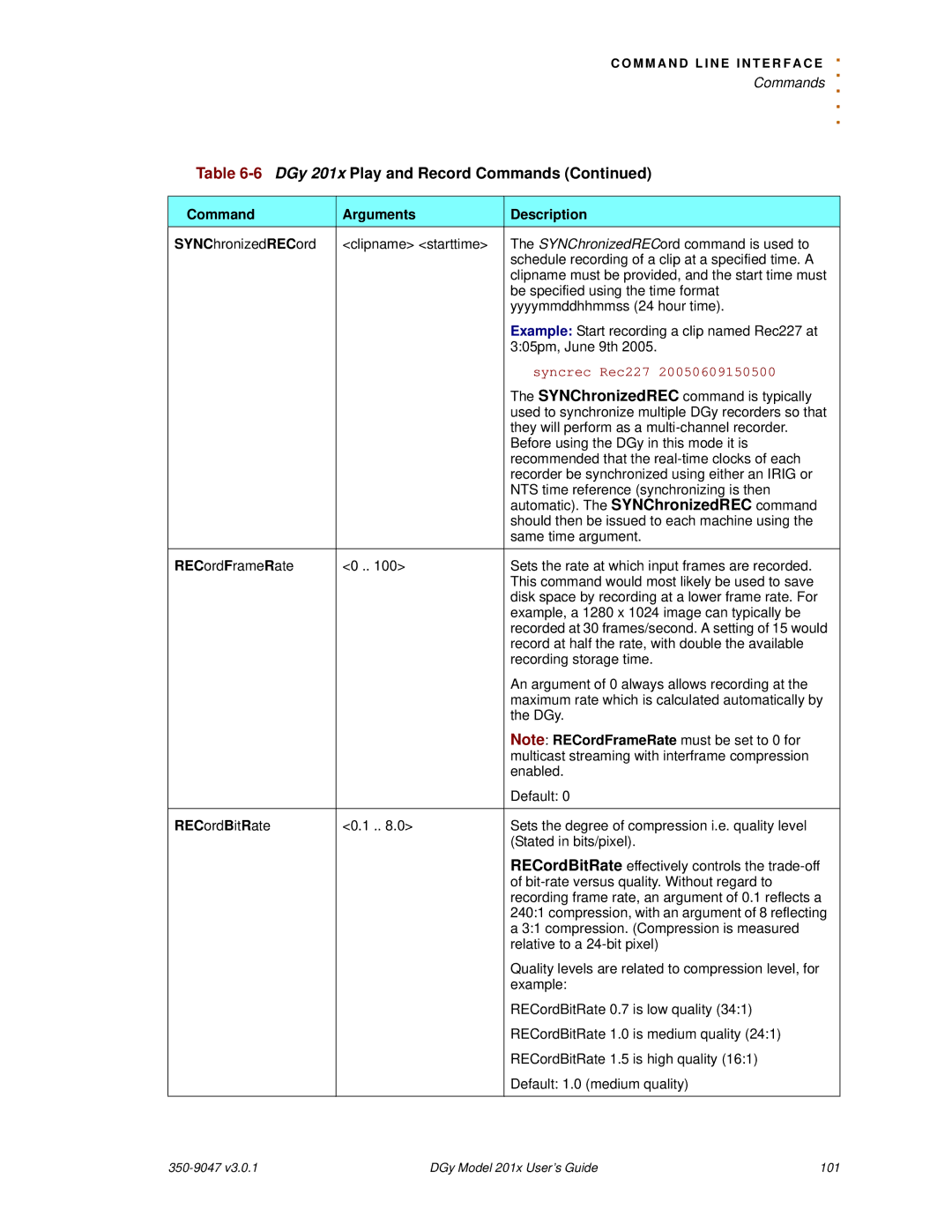C O M M A N D L I N E I N T E R F A C
.E
|
| . |
|
| Commands |
|
| . . . |
Table | ||
|
|
|
Command | Arguments | Description |
SYNChronizedRECord | <clipname> <starttime> | The SYNChronizedRECord command is used to |
|
| schedule recording of a clip at a specified time. A |
|
| clipname must be provided, and the start time must |
|
| be specified using the time format |
|
| yyyymmddhhmmss (24 hour time). |
|
| Example: Start recording a clip named Rec227 at |
|
| 3:05pm, June 9th 2005. |
|
| syncrec Rec227 20050609150500 |
|
| The SYNChronizedREC command is typically |
|
| used to synchronize multiple DGy recorders so that |
|
| they will perform as a |
|
| Before using the DGy in this mode it is |
|
| recommended that the |
|
| recorder be synchronized using either an IRIG or |
|
| NTS time reference (synchronizing is then |
|
| automatic). The SYNChronizedREC command |
|
| should then be issued to each machine using the |
|
| same time argument. |
RECordFrameRate | <0 .. 100> | Sets the rate at which input frames are recorded. |
|
| This command would most likely be used to save |
|
| disk space by recording at a lower frame rate. For |
|
| example, a 1280 x 1024 image can typically be |
|
| recorded at 30 frames/second. A setting of 15 would |
|
| record at half the rate, with double the available |
|
| recording storage time. |
|
| An argument of 0 always allows recording at the |
|
| maximum rate which is calculated automatically by |
|
| the DGy. |
|
| Note: RECordFrameRate must be set to 0 for |
|
| multicast streaming with interframe compression |
|
| enabled. |
|
| Default: 0 |
|
|
|
RECordBitRate | <0.1 .. 8.0> | Sets the degree of compression i.e. quality level |
|
| (Stated in bits/pixel). |
|
| RECordBitRate effectively controls the |
|
| of |
|
| recording frame rate, an argument of 0.1 reflects a |
|
| 240:1 compression, with an argument of 8 reflecting |
|
| a 3:1 compression. (Compression is measured |
|
| relative to a |
|
| Quality levels are related to compression level, for |
|
| example: |
|
| RECordBitRate 0.7 is low quality (34:1) |
|
| RECordBitRate 1.0 is medium quality (24:1) |
|
| RECordBitRate 1.5 is high quality (16:1) |
|
| Default: 1.0 (medium quality) |
|
|
|
DGy Model 201x User’s Guide | 101 |
